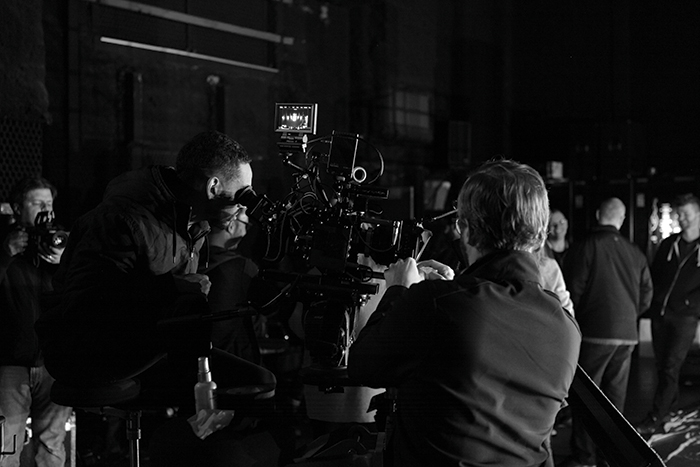Morgan Cooper’s journey into cinematography was unconventional. On his 18th birthday he bought his first camera—a Canon T2i—and, as he told us, “The rest is history!” We asked him about his role as a Director of Photography, his processes and how he collaborates with his team.
AD: Are you self-taught or did you receive training or education?
MC: A combination of self-teaching & being on set a LOT! There’s no better education than being on set.
AD: What is your process for coming up with a look for your film?
MC: My process starts on paper—reading the script/treatment/story boards and taking notes to form questions, like how should this moment feel visually, naturalism vs. expressionism, etc. From there, I seek inspiration and visual references from which I put together a look-book with tonal ideas and other imagery. I share the look-book with my director to hone in on the look of our project. From there, I test cameras/lenses/filtration/etc. to find the right combination for the desired look. I then communicate with the art department about set elements and communicate with my gaffer regarding light sources we need to achieve the look. It’s a very time-consuming process that consists of a lot of research and conversation, which I really enjoy.
AD: How much communication goes on between you and the director?
MC: Communication is everything—we HAVE to be aligned creatively well before we step on set in order to execute and create something that ultimately we’re both proud of and makes our client successful. Every director is different, so I really make an effort to get to know my directors on a personal level. I’ve found that approach to be really helpful in terms of communication in pre-production and on set.
AD: How much collaboration is there between you and the set designer and art director?
MC: We truly work hand-in-hand. They’re the wind beneath my wings! It’s extremely important to have a strong relationship with the art department, because they are essentially another aspect of my cinematography. The canvas I’m lighting has to be strong, and that starts with art department.
AD: How important is the storyboard to your process? How closely do you stick to it?
MC: It really depends on the shoot. Some projects, like a lifestyle commercial or a stylized doc piece, l might call for more free-flowing spontaneity in the scene work. We’ll prep a scenario and then find moments within the scene. It’s a really fun way of working, and I find that often something magical happens on screen when the moments do happen.
Conversely, a commercial on a stage is always storyboarded and we don’t deviate from the boards. Much time is spent prepping for a stage shoot, so absolute precision is vital to making our days. I find that most of my work is done during pre-visualization; from there, it’s just a matter of execution and fine-tuning our visual concepts on set.
AD: Do you prefer to run your own camera? How heavily do you rely on First Camera, Second Camera?
MC: I enjoy operating because I feel more of a connection to the actors and story; but ultimately, it depends on what the shot and project call for. There are times where it’s crucial for me to be at monitor with my director, which means I’m collaborating with my camera operators. I find that working with a great operator can enhance my work because they’ll build upon my concept with their creativity/instincts.
AD: Do you work closely with best boy grip and best boy lighting? Why or why not?
MC: My gaffer and key grip handle their departments accordingly, so I don’t typically communicate any technical information to the best boys on set.






